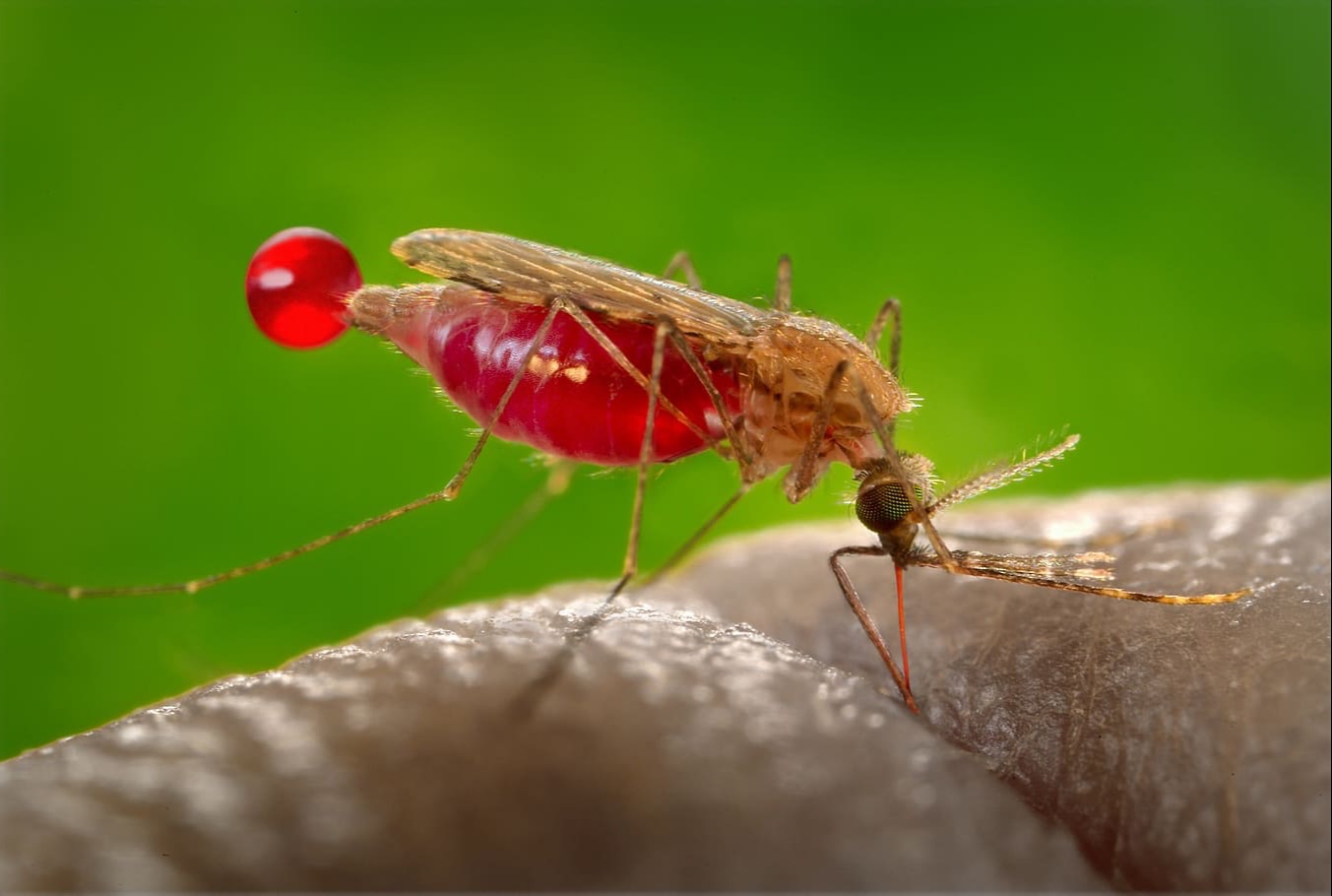Written by Daniel JeyarajIntro to Malaria
Malaria is a mosquito-borne infection with one of the greatest burdens of all diseases in human history. Although cases of malaria have been in decline, this is no cause for complacency, as the WHO reported 229 million cases in 2019 alone. Furthermore, the burden of disease is borne disproportionately by developing countries. Victims of malaria witness flu-like symptoms (fever, headache, chills, etc.), enlargement of the liver, and severe weakness. The “malignant tertian” form of the disease, where the effects breach the blood-brain barrier, can cause coma and death. The infection itself is caused by single-celled parasites in what’s called the “Plasmodium genus” that reside in the salivary glands of the mosquito. When a mosquito bites, sporozoite (“spore-like”) forms of the Plasmodium migrate to the liver of the human host. They invade hepatocytes (the primary cells of the liver) and multiply. In this phase (called the “merozoite phase”), the parasites are released into the bloodstream once again, where they invade, replicate, and kill red blood cells (the oxygen-carrying cells of blood). When another mosquito bites the host, a special form of the Plasmodium enters the mosquito, allowing for the spread to new hosts. What is CRISPR-cas9 Gene Editing? CRISPR stands for “clustered regularly interspaced short palindromic repeat” DNA sequences. It refers to a set of DNA sequences found in bacteria taken from the DNA of viruses that the bacteria encountered previously. It is used as a “library” for the bacteria to recognize similar viruses in the future. The bacteria use specialized enzymes like Cas9 to read the DNA of invading viruses. It unwinds foreign DNA, and uses the CRISPR “library” to identify previously encountered viruses. If a match is found, Cas9 cuts the foreign DNA with great precision, nullifying the threat. In CRISPR-Cas9 gene editing, researchers can manipulate the sequence that Cas9 uses for comparison, allowing for Cas9 to edit the DNA of organisms with incredible precision. Project Needlenose Using CRISPR-Cas9 gene-editing techniques, a study by Gantz et al. in 2015 used CRISPR-Cas9 gene editing to insert parasite-resistance genes into a certain species of mosquito. These genes contain information for the production of special proteins (called “antibodies) which target and kill the plasmodium parasites without harming the mosquito. This has the added benefit of avoiding environmental damage that strategies that directly kill mosquitoes can cause. For example, simply wiping out a mosquito population can diminish a food source for many kinds of birds, lizards, and spiders. The goal of this strategy is to introduce these modified mosquitoes into the wild. By breeding with parasite-bearing mosquitoes, the resistance genes should spread throughout the population. In the most optimistic of scenarios, this has the potential to eradicate malaria with no ecological damage whatsoever. However, there is a missing step in this puzzle. If a modified mosquito was to mate with a mosquito in the wild, only 50% of their children would bear the resistance genes. The generation afterwards would only have 25% resistance, and so on. This is because there are usually two versions of a gene in an organism, with the children receiving one from each parent. A solution to this problem relies on a controversial technique called “gene drive” that ensures the inheritance of resistance genes by all of the progeny. This is exactly what Gantz and his team did. In the lab, it was confirmed that more than 99% of the progeny from a modified and wild-type mosquito bore resistance. This strategy of combining gene editing with gene drive to eradicate mosquito-borne diseases is being pursued by other teams across the world, and for a myriad of mosquito species. Limitations and Risks There are many potential risks associated with using this technology in the real world, and so they must be investigated thoroughly before actual use. One potential threat posed by the gene drive strategy is that it can reduce the fertility of the modified species. Given the highly efficacious nature of the gene drive, mass infertility in a single species could have severe ecological ramifications. In addition, certain authors have raised the possibility of modifications spreading beyond the intended host. Conclusion While certainly not without risk, this strategy presents a bleeding-edge approach with the potential to eradicate one of mankind’s oldest killers. Image: https://www.pxfuel.com/en/free-photo-ouchk
0 Comments
Your comment will be posted after it is approved.
Leave a Reply. |
Categories |


 RSS Feed
RSS Feed